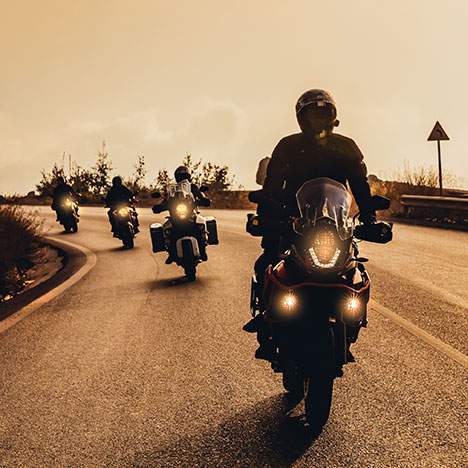For those who love to ride, California offers some of the best motorcycle roads in America. The Golden State has over a thousand miles of Pacific coastline, vast stretches of arid dessert, winding mountain roads and some of the most amazing cities in the world. However, are motorcycles safe? Along with the freedom of motorcycle riding comes risk.
According to a May 2013 report from the National Highway Traffic Safety Administration (NHTSA), while motorcycles accounted for only 3% of all U..S registered vehicles in 2012, motorcyclists were 26 times more likely to have a fatal collision than those who died in a car crash.
Protect Yourself As a Rider

To help even these odds, there are steps a rider can take to increase safety, decrease the dangers of riding motorcycles and help ensure a pleasurable ride unmarred by a motorcycle accident. How do many motorcycle crashes happen? A variety of scenarios can lead to this, but here are a few ways to make an accident less likely:
- Make yourself visible. A motorcycle is smaller than a passenger car with a much smaller outline from behind. Motorists tend to expect to see larger vehicles, and they are not looking for motorcycles. In self-defense, motorcycle riders should wear bright colors and reflective material on helmets and clothing. They should use turn signals, flash their brake lights before slowing down, and avoid riding in a car’s “blind spot.”
- Do not consume alcohol before you ride. Any amount of alcohol can slow your reflexes and dull your abilities. It requires more skill and coordination to operate a motorcycle than a car. According to the NHTSA, approximately half of all single-vehicle motorcycle crashes involve alcohol. Do not risk it!
- Wear protective gear and clothing. Motorcycle riders must rely on their helmets, clothing and eye protection to make the ride more comfortable and reduce the risk of injury. Thick, protective gloves, shoes and clothing can protect you from the elements and might be the only thing between you and the pavement in a motorcycle crash. Never ride without a certified helmet and eye protection. Look for the U.S. Department of Transportation label.
- Buy the right motorcycle. Do not try to ride a motorcycle that is too heavy for you to handle, push or pick up if it falls. Choose the type of machine that is right for your purpose. Do not buy a highway bike for off-road riding or a trail bike for highway use.
- Get the training you need. Read your owner’s manual cover to cover to get familiar with your bike. Take a motorcycle rider training course. Proper training can provide the knowledge and skills you need to operate your motorcycle safely and proficiently.
Although only 2% of all registered vehicles in the U.S. are motorcycles, about 5% of all highway traffic fatalities each year result from motorcycle accidents. The disproportionate rate of fatalities is due to the fact that motorcycles provide little protection in the event of an accident. They also do not have a windshield or wipers to increase visibility in inclement weather.
However, what motorcycles lack in the way of protective characteristics can be offset somewhat by their maneuverability and ability to stop quickly and swerve to avoid obstacles. A wise rider will take the needed measures to reduce the risk of injury and know how most motorcycle crashes occur, which can also improve the quality of the ride.
Are Motorcycles Safe? Know Your Rights In Case of an Accident
If you’re injured in a motorcycle accident contact the motorcycle accident lawyers at Avrek Law Firm to review the firm’s motorcycle accident compensation examples. We have recovered more than $1 billion for our clients in over 45,000 cases. Reach out today to book a free consultation with one of our lawyers.
